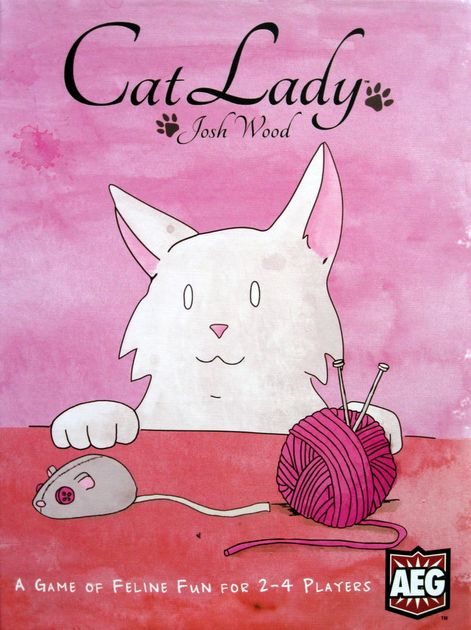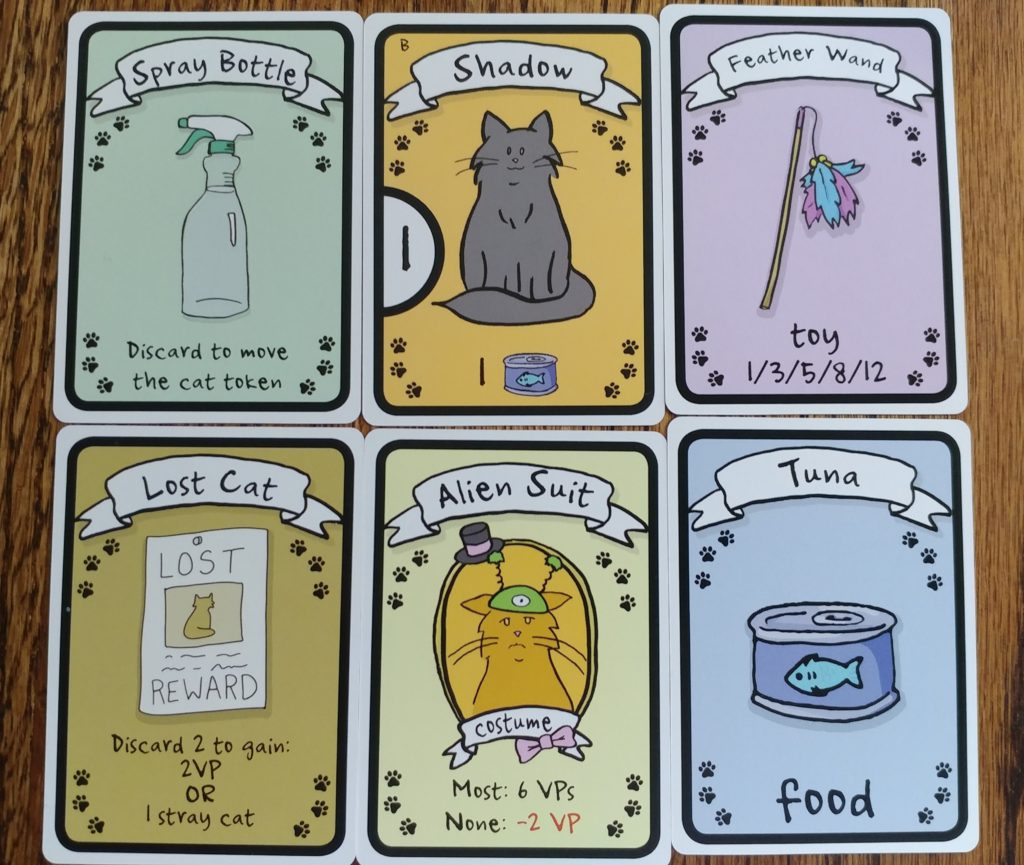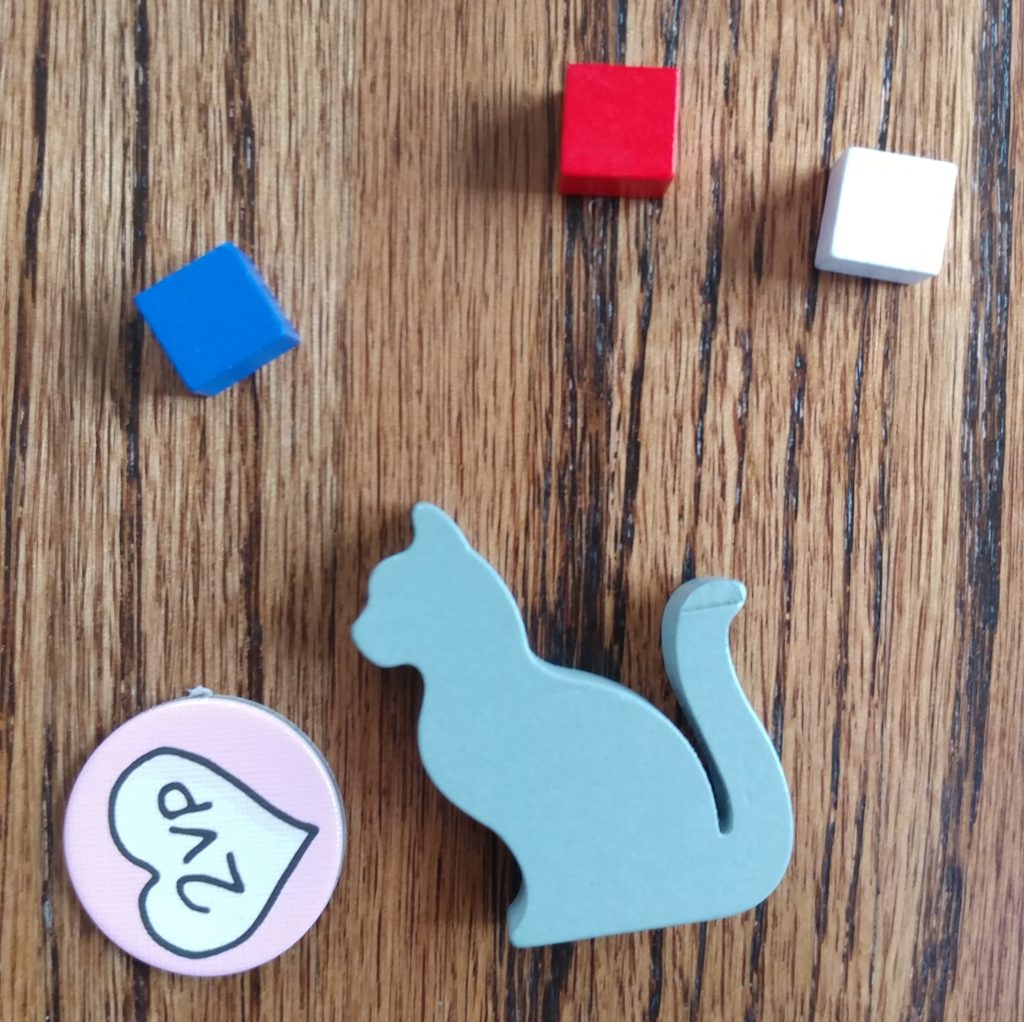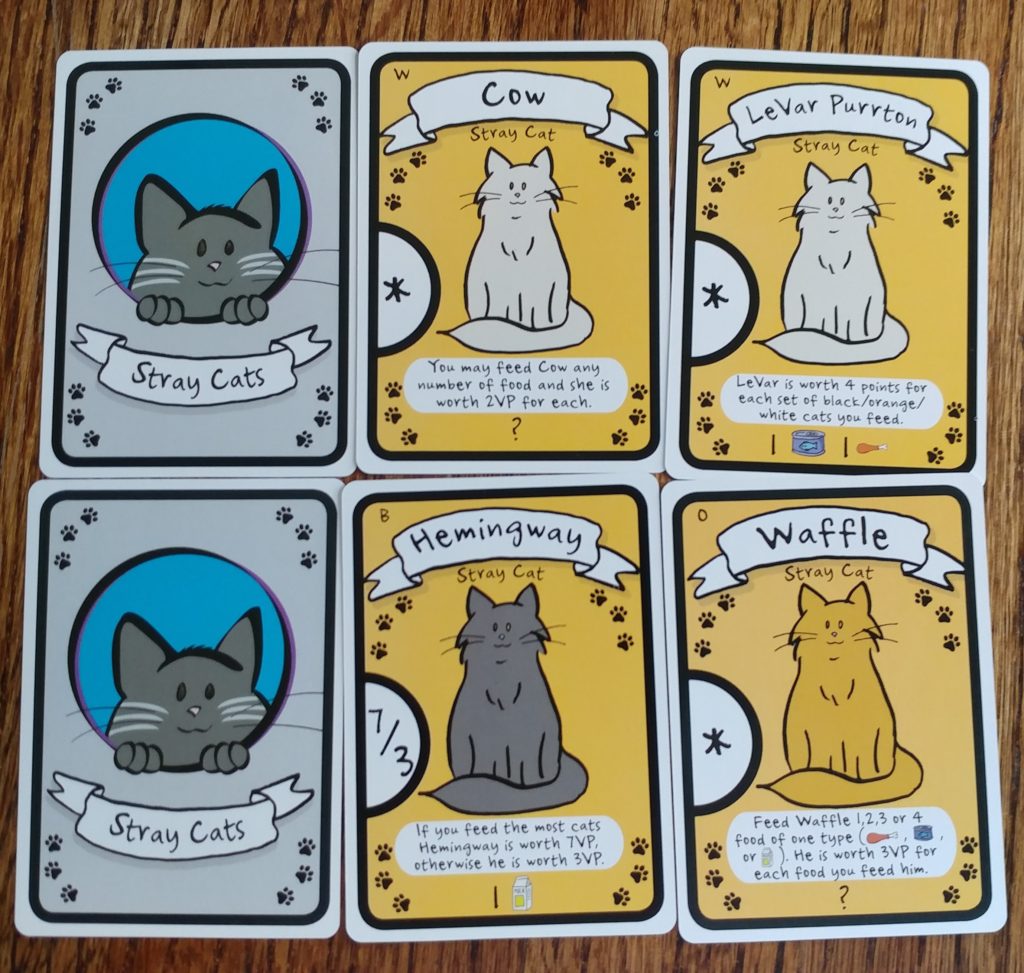It’s fun, ridiculous, and about cats.

Cat Lady is a card game where the players take the role of cat ladies. The game takes pains to note that, unlike modern notions that paint the cat lady as an old, probably bitter, spinster, some of the finest people in human history have been cat ladies. The game mentions such famous cat ladies as Marie Antoinette and Ernest Hemingway. For some reason, the game designers failed to mention the reviewer, but that oversight does not detract from the game.
The game consists of two decks, a rather large game deck and a smaller strays deck. Three strays are selected at the beginning of the game, and no further use is made of the strays deck. A nine-by-nine grid of cards from the $PLAYING deck is then set up. The person with the most cats starts the game. Before their first turn, the player to their right places a gray wooden cat token above one column or to the left of one row.

Play consists of a player selecting one row or column of cards to add to their hand. They cannot select the row or column marked by the grey cat token. The player acts on any cards as necessary, replaces the cards he took from the deck and moves the cat token to block the row or column he just took. Play then proceeds to the right. The game ends when you cannot replace a row or column.
The cards in the game deck consist of four kinds of food (tuna, milk, chicken, and wild), cat toys, cat costumes, catnip, spray bottles, lost cat posters, and, of course, cats. Each cat is worth a certain number of victory points, feeding requirements, and a color. Stray cats are similar but usually have special scoring or a special ability. There are five cat toys, and they are scored by sets. Cat costumes and catnip score variably, but if you fail to get any, they can cost victory points. Cat toys score by the size of sets of unique toys. There are five different toys, and if a player has duplicates, he can score multiple sets. Spray bottles allow the player to move the grey cat blocking token. Pairs of lost cat posters can be traded for two victory points or one of the three stray cats. Food cards are immediately exchanged for a wooden block of the appropriate color.

Feeding your cats is the principal concern of the game. As I noted, both regular and stray cats have feeding requirements, such as three tuna or two chicken and one milk. Each cat you can feed scores his stated victory points, while each unfed cat costs you two victory points. However, you do not want leftover food as there is a penalty for the player with the most food remaining after feeding his cats. However, if you have food left over after feeding all your cats, you risk a penalty if you have the most food leftover. Feed cats also factor into catnip scoring. You score a variable number of points per feed cat based on how much catnip you have. The risk with catnip is no bags score 0, but one bag is -1 VP per feed cat. Costumes score 6 points for the player with the most and -2 for a player with none. Finally, mentioned above, toys score an increasing amount for the size of sets of unique toys.
What stands out about this game? The first is it is just plain fun and impossible to take too seriously. There is a bit of strategy involved as you find yourself trying to keep certain cards out of your opponents’ hands more than get them sometimes. Initially, I only used the spray bottle card to get a blocked set of three, but eventually realized it could be used to block an opponent getting a set without taking it yourself. Good-natured “I wanted that” complaints happen regularly. In a move, not enough card games do, the game deck has cards marked 3+ and 4 indicating cards to remove for 2 and 3 player games.

A standout feature is the stray cat deck. With 13 cards, it allows 286 different sets of available stray cats. Having the right stray cat can really boost your score. For each color of cat, white, black, or orange, there is a stray cat who scores points based on the number of cats of that color you feed while another stray needs one of any type of food, but scores for however many cats you feed that food. Cow will eat any amount of food of any time you feed her, scoring 2 VP per food. If you can get Cow, you avoid the food penalty. In one game, I tried not to draw any cats from the grid after I bought Cow. It didn’t work but demonstrates the effect of which stray cats are available on gameplay. Much of the longer-term replayability comes from those 286 possible combinations.
As for the cat theme, it’s pretty good. The cat names are fun. Using the spray bottle for the “move the blocked set” card will bring a smile to any cat staff playing. Even the costumes, something odd for cats, get in the theme as the dressed cat in the cards does not look happy. The look is much closer to “I know where you sleep.”
All in all Cat Lady is a solid, fast-playing card game. It is one of those games where the fun of playing outweighs the importance of winning while having enough strategy to engage a more serious gamer. Combined with the short playing time those traits making a good game for a mixed group of serious gamers and people more interested in a game as a form of hanging out.
I give it 8 out of 10 paws.

Be First to Comment